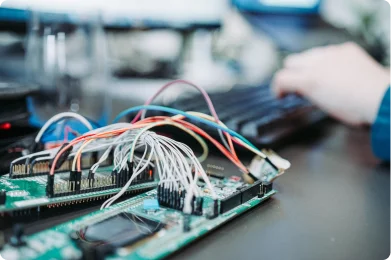
In this article on BYOD, we are going to bring you on a journey so you can be prepared to determine if a BYOD program is the right fit for your organization. You’ll become a trusted advisor for upper management by preparing the answers to the following or simply asking these questions.
Deciding on BYOD Policies and Processes
There is no universal policy that can work for all organizations because every organization is different in terms of location, employee culture, financial constraints, labor affiliations, etc. As an organization, it is important to pay close attention to cultural limitations, legal implications and labor restrictions, as these factors will play a role in a BYOD strategy. Specific requirements need to be met in order for BYOD to be effective.
- What is the goal of your BYOD program? (cost savings, meet employee requests for BYOD…)
- What is the degree of interest for your employees to cooperate with the BYOD program and how will you promote it to them?
- What is the inclusion criteria? Do you have adequate controls in place for all groups?
- Will you provide financial compensation if you need to contact employees after hours?
- What sort of proof should the employee present to you to prove that the amount that theyrequest to be subsidized for is indeed accurate?
- Can you delete information from the device?
Establishing BYOD Subsidies Based on Regions
It is important to decide if you will subsidize employees for expenses when they use their personal mobile devices for work. There are certain conditions that will help form policies and processes. First check the contractual requirements, employee culture and the main objectives before establishing subsidies for BYOD. SRA – Stipend, Reimbursement and Allowance is used to encourage people to use BYOD and should be used as a means to share costs between the employee and the organization. It’s also important to separate the amount of SRA given to employees according to a tier level system. Organizations must also be prepared to take on tax regulations that are specific to the circumstances. To recoup the taxes, employees need to do extra work to confirm that the usage was for work and not for personal use. That means extra time is spent on filling expense reports.
- Are you aware of the labor laws that apply to employees and organization as per location? What are they and how do these labor laws affect the employees and the organization?
- Are you required to give subsidies based on contractual requirements between labor groups, unions or work councils? If so, then how much?
- Are you aware of the tax implications that are associated with SRA?
- What is the tax implication of implementing a BYOD program for employees and for the corporation?
- What department will be responsible for administering and approving the BYOD SRA payments?
Deciding On Who Is Eligible For BYOD Subsidies
The next set of questions is geared towards rules and regulations of who is entitled to SRA’s in BYOD. How to distribute SRA in your organization. It is important to distribute them along the lines of business needs and cost management in order to implement the appropriate level of controls.
- What BYOD reimbursement is being evaluated? (no-reimbursement, stipend, expense account, split-billing)
- Have you placed controls on who is qualified for SRAs?
- What are the business roles for the employees and does it merit SRA for BYOD?
- How will you differentiate the tiers and decide which employee belongs to which group?
- How much of the cost is going to be subsidized?
Outsourcing the Management of a BYOD Program
If you lack the expertise to implement BYOD, then don’t hesitate to outsource tasks in order to have a successful roll out. Experts can help you make the right decisions for your organization.
- Does your organization have the proper infrastructure in place to support BYOD?
- Do you have the tools/apps necessary for BYOD users to have the same experience as CYOD/COPE participants?
- Are you going to adopt a Mobile Device Management (MDM) agent? Or can the current MDM agent support your needs?
- What are the solutions offered by third parties to help organizations manage BYOD? How much will it cost to use a third party to help manage the BYOD program and SRA?
- Are you ready to support more devices on the network as employees may start to bring other devices in addition to the company issued device?
Establish the Responsibility Between Employee and Corporation
Level 1 User support responsibility will be pushed onto the user instead of the organization. When you open BYOD you will need to support a wider variety of devices. You will need to specify what you can support and define the mobile strategy you’re going to use.
- What is the process for reimbursing your employees? How will the approval be done?
- What devices can we support? What devices can’t we support?
- What are employees responsible for?
- What is the procedure for when employees have phone line number ownership?
Before You Choose BYOD, Make Sure You’ve Got A Plan
It’s very important to ask questions before committing to anything. Asking questions will help you make a more informed decision so that you can do what’s best for your organization. If you would like to learn how to build a solid BYOD policy and learn about the hidden costs associated with it then check out our Practical Guide to BYOD.

SOURCES:
https://www.gartner.com/document/3311320?ref=TypeAheadSearch&qid=f44f18d57ad53ed74439edcbbc25a21e
Rich Doheny: https://www.gartner.com/analyst/28176
———————–



